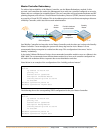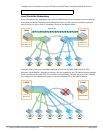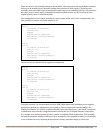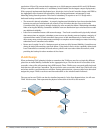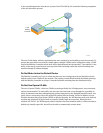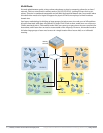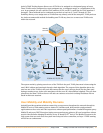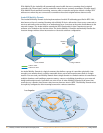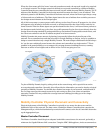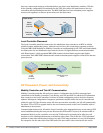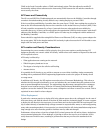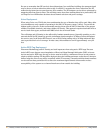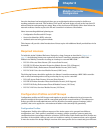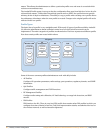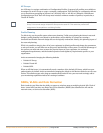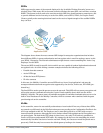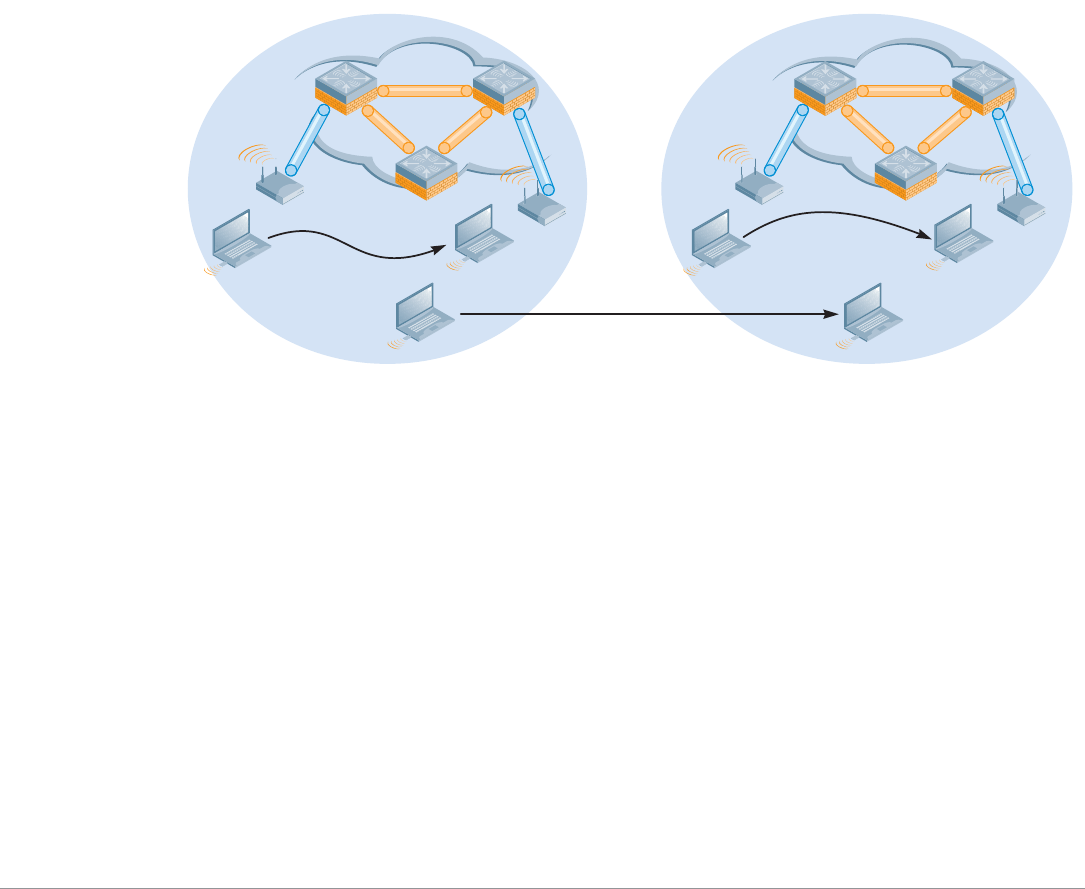
Campus Wireless Networks Validated Reference Design Version 3.3 | Design Guide Mobility Controller and Access Point Deployment | 33
When the client roams off of its ‘home’ network to another network, the network is said to be attached
to a ‘foreign’ network. The foreign network is defined as a network controlled by a different Mobility
Controller than the one controlling the home network, but still within the same Mobility Domain. The IP
address of the Mobility Controller on the foreign network becomes the client’s ‘care-of address’. This
address is passed to the Mobility Controller on the home network, where the Home Agent keeps a map
of clients and care-of addresses. The Home Agent learns the care-of address from a similar process on
the foreign network known as the Foreign Agent.
All of this is necessary to ensure proper traffic delivery to the client. From an IP perspective, the client
still appears to be attached to its home network, so all data bound for that client will be routed to its
home network. When the Home Agent sees packets bound for the client, it will tunnel those packets to
the foreign network for delivery to the client. Any traffic generated by the client is sent directly from the
foreign network using standard IP routing and delivery mechanisms. Routing tables remain intact, and
the client can continue to use the IP address acquired in its home network.
Mobility Domains take some amount of planning, but generally follow the physical layout of the
network. For a centralized network that is located in a single building or campus, it may be possible to
design a network that has only a single Mobility Domain. The main design consideration should always
be “can the user realistically roam between the subnets and controllers in a single session?” This is
possible in the same building or on a campus with coverage between buildings; however, roaming
between an office in Los Angeles and an office in New York is not going to occur.
To plan a Mobility Domain, begin by taking a look at the network map, with a special focus on the
access points and controllers. Generally, this will provide the information you need to develop a logical
grouping of Mobility Domains. You should also examine heat maps of your network, and determine if
the coverage areas provide enough connectivity and overlap to allow your clients to transition
networks. Outdoor APs may extend this coverage between buildings providing you with a larger
Mobility Domain.
Mobility Controller Physical Placement and Connectivity
Physical deployment of the Mobility Controllers is typically in two areas, the data center and the
distribution layer of the network. The data center contains the Master Controllers that comprise the
Management layer, while the distribution layer switches will connect to the Local Controllers that make
up the Aggregation layer.
Master Controller Placement
The Master Controller should be given adequate bandwidth connections to the network, preferably a
minimum of a Gigabit Ethernet LAN connection. Using the MMC-3600 appliance, Aruba recommends at
arun_074
Home
Agent
Foreign
Agent
172.16.20.1 172.16.20.1
172.16.20.2
LAN
MD1
Los Angeles
Client travels
Home
Agent
Foreign
Agent
10.100.2.1 10.100.2.1
LAN
New York
Client travels
10.100.2.10
MD2
Client travels



